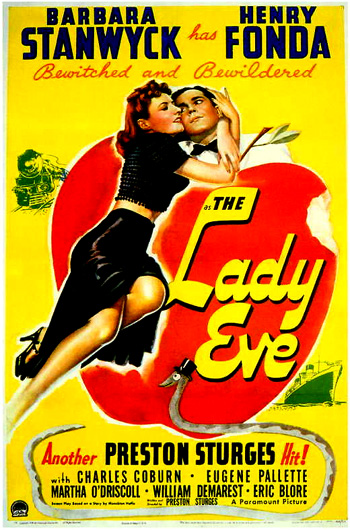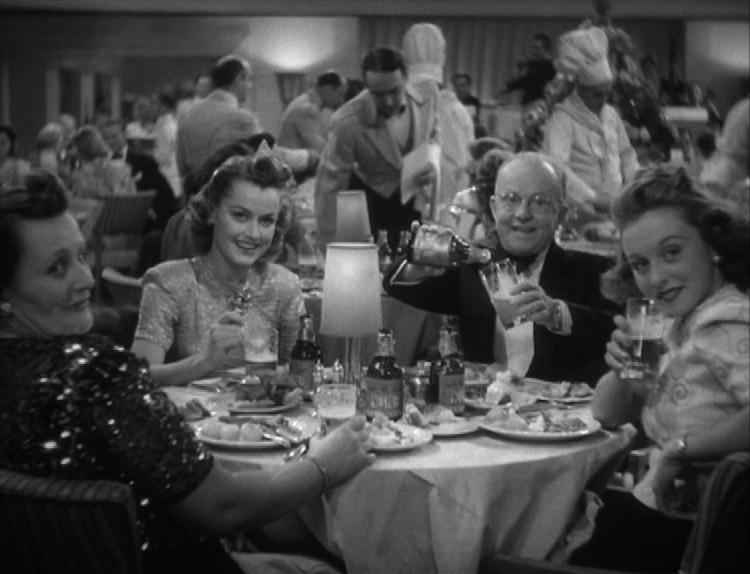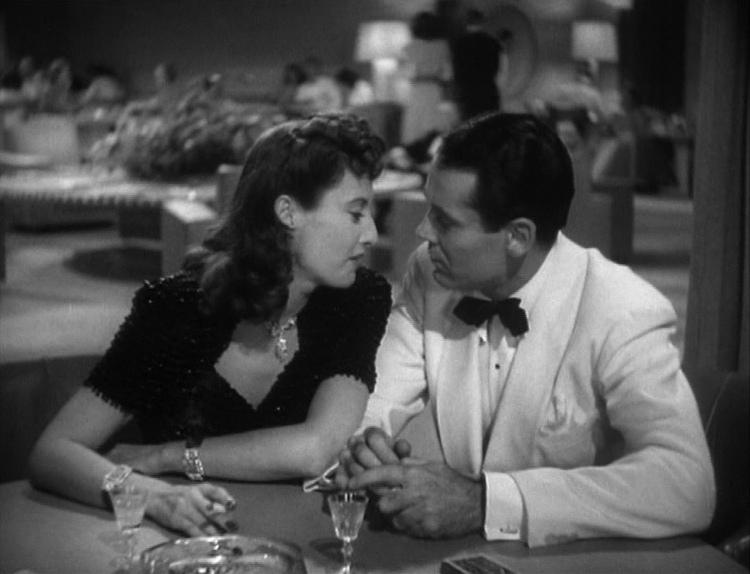
10 Essential Movies to Watch by Marc Eliot 2. The Lady Eve (1941) by Preston Sturges
This droll American film is from one of the Hollywood studio era’s finest writer/directors, or auteurs. It was chosen by the New York Times as 1941’s best film of the year, winning out over Orson Welles’ Citizen Kane (which, for a number of reasons, was not a very popular film with audiences or, unbelievably, with critics when it opened).
The Lady Eve, directed by Preston Sturges. USA (1941).
Sturges remains Hollywood’s foremost satirist, hailed for his brilliant use of dialogue and a cinematic style that suggests, rather than shows, some of the most sophisticated seduction scenes ever filmed. They easily sailed over the heads of the Paramount’s pedestrian censors, and gave audiences that rarest of rare Hollywood products, an adult comedy that is both funny and profound (but never profane).
The Lady Eve concerns a father/daughter team of grifters out to snag a young, good-looking, if naïve, millionaire, to get him to marry her, so she and pops can grab his money. The father is played by great ‘40s character actor Charles Coburn, always a joy to watch onscreen, and, working against her usual street-tough babe type, Barbara Stanwyck as his wily daughter. Playing even further against type, following his starring roles in John Ford’s triple-play of gritty, monumental 1939 epics, The Grapes of Wrath, Young Mr. Lincoln and Drums Along the Mohawk, Henry Fonda is the virginal millionaire in love with snakes and oblivious to women, who falls, literally (as you will see), head over heels, and everything in-between, for Stanwyck’s ample charms.
It’s always a red (or blue) flag when a film has “Eve” in the title –Joseph L. Mankiewicz’ 1950 All About Eve, is a good example – it usually signals the heroines of the story will not portray a single woman, but womankind. In case you missed it, Sturges hammers the point home with that snake he loves. Get it? The tangled (and untangling) of the comic situations are a delight to both watch and hear – funny, physical, clever, witty, surprising and loaded with belly laughs.
Sturges understood better than most that comedy was not a choice between physical or verbal, but that the physical augments the verbal, and therefore dialogue must operate at top speed to keep up, the reason “screwball” comedy is always spoken so quickly. In Sturges’ films, his themes are developed visually, truth arrived at through action, while plot development is aural, information described by dialogue”.
Sturges’ glory years lasted a scant four years, during which he wrote and directed 7 classics: The Great McGinty (1940), Christmas in July (1940), The Lady Eve (1941), Sullivan’s Travels (1942), The Palm Beach Story (1944), The Conquering Hero (1947), The Great Moment (1947). All were made at Paramount, which Sturges left in 1948 after a series of protracted, and ultimately losing, battles for creative control, only to sign what turned out to be a disastrous contract with Howard Hughes, who had just acquired RKO in a fire sale. The eccentric billionaire spent the next decade destroying the studio, and along the way a boat-load of its best talent, including, sadly, Sturges. Easily available on all movie platforms, The Lady Eve is a must for movie lovers and future movie makers everywhere.
Did you miss the first recommendation? Read it now 1. Stars by the Pound (2018) by Marie-Sophie Chambon
More content from Marc Eliot:
- Marc Eliot’s Top 10 Classic Movies for Film Students to Watch
- Teaching an Auteurist Approach to Cinema for Film Students at the UFM Film School
- Artista Emprendedor: The Business of Hollywood con Marc Eliot
Stay tuned for the third recommendation next week!











